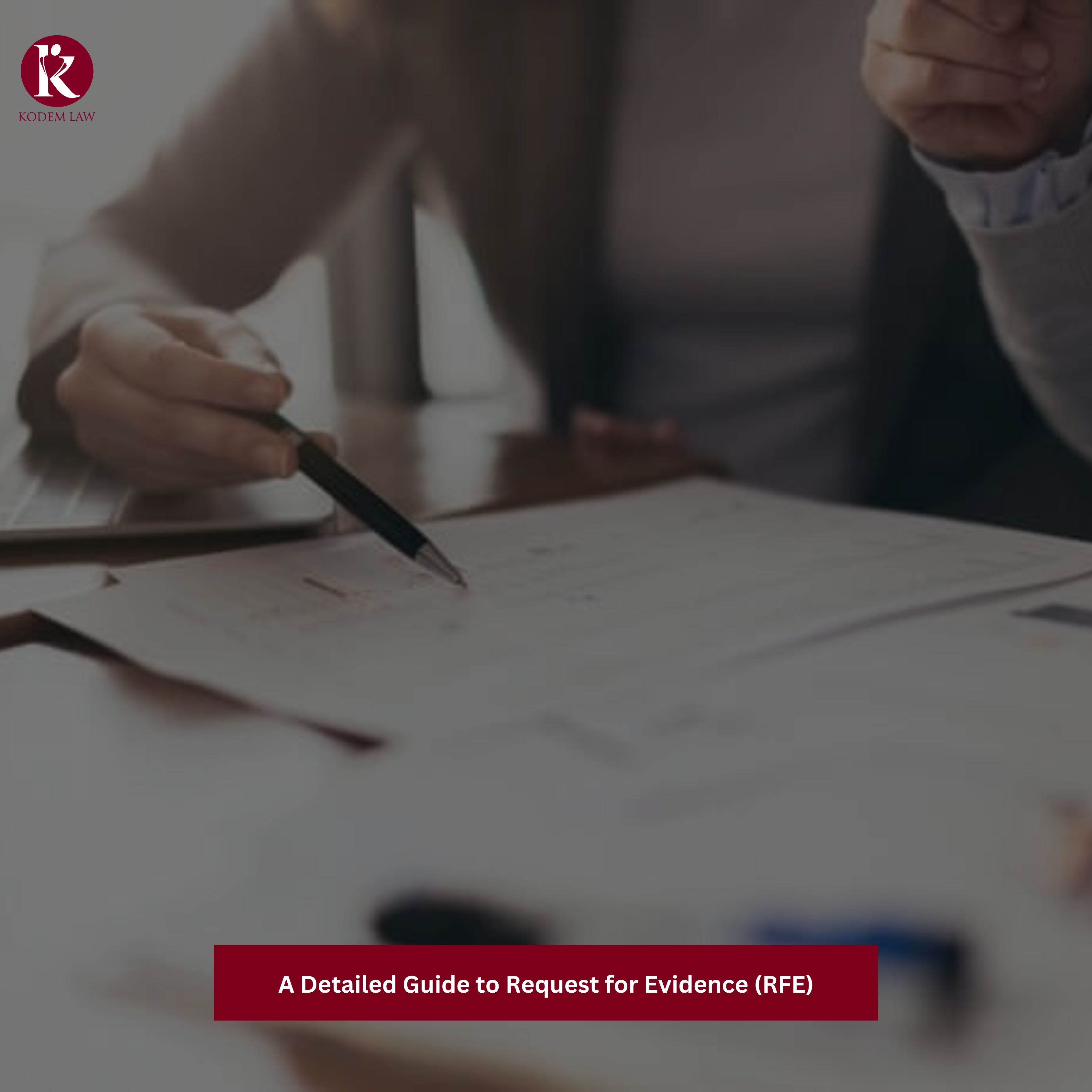
Request for Evidence (RFE) is common in the immigration process, where the U.S. Citizenship and Immigration Services (USCIS) requests additional information or evidence to support an application or petition. This detailed guide aims to comprehensively understand RFEs, including their purpose, common triggers, and strategies to effectively respond to them.
By following this guide, applicants can confidently enhance their chances of a successful outcome and navigate the RFE process.
What Is a Request for Evidence (RFE)?
A Request for Evidence is a notice issued by the United States Citizenship and Immigration Services (USCIS) to an applicant for an immigration benefit, such as a visa or a green card, requesting additional information or documentation to support their application.
The RFE notice typically identifies the specific information or evidence that is either missing or insufficient and sets a deadline by which the applicant must respond. Failure to respond to an RFE by the deadline can result in the denial of the immigration benefit.
An RFE is a common part of the immigration application process and may be issued for a variety of reasons, such as a lack of supporting documents, incomplete or incorrect information, or concerns about an applicant’s eligibility or admissibility. It is important for applicants to respond to an RFE promptly and thoroughly to increase their chances of receiving the immigration benefit they are seeking.
Receiving a Request for Evidence is a common obstacle people face in the green card process, An RFE is issued when the USCIS needs additional information or documentation to support the green card application. Common reasons for an RFE in the green card process include:
- missing or incomplete documents
- lack of evidence of financial support
- concerns about an applicant’s eligibility or admissibility

What Does It Mean When You Receive an RFE?
Receiving an RFE does not necessarily mean that your application will be denied. It is a common part of the immigration application process, and the USCIS issues RFEs to ensure that applications are complete and that applicants are eligible for the immigration benefit they are seeking. However, responding to the RFE promptly and thoroughly is important, providing all the requested information and documentation, to avoid delays or denial of your application.
Key Parts of an RFE
An RFE is a document issued by the (USCIS) to request additional evidence from an applicant or petitioner when the initial evidence submitted is insufficient to make a decision on the case. The key parts of an RFE include:
It generally begins by identifying the specific case and its related facts. This may include information such as the applicant’s or petitioner’s name and identification number type of immigration benefit being sought, and any relevant dates or events.
The RFE will then cite the specific legal requirements that must be met in order for the application or petition to be approved. This may include references to immigration laws, regulations, policies, or court cases that apply to the case.
The RFE will list the evidence that was submitted with the initial application or petition. This may include documents such as birth certificates, marriage certificates, or financial records, and statements or affidavits provided by the applicant or petitioner.
The RFE will identify the specific evidence that is missing or insufficient to meet the legal requirements for approval. This may include additional documentation, clarification of certain facts, or proof of eligibility for the requested benefit.
You will get a deadline by which the requested evidence must be submitted. Failure to submit the requested evidence by the deadline may result in a denial of the application or petition.
The RFE will provide contact information for the USCIS and the specific office handling the application, as well as instructions for submitting the requested information or evidence.
Note: Overall, the RFE serves as a crucial communication tool between USCIS and the applicant or petitioner, ensuring that all necessary evidence is provided and considered before a final decision is made on the case.
Difference Between Request for Evidence and Request for Additional Evidence
Request for Evidence (RFE) | Request for Additional Evidence (RAE) |
A request by USCIS for additional information or documentation in support of a pending application or petition | A subsequent request by USCIS for more information or documentation after an initial RFE has been responded to |
Usually issued when USCIS finds that the submitted application or petition is incomplete or insufficient to make a decision | Issued when the initial RFE response did not provide sufficient evidence to support the application or petition |
Can be a standard template or a personalised request based on the specifics of the case | Can also be a standard template or a personalised request, depending on the case |
Must be responded to within the timeframe given by USCIS (usually 87 days) | Must also be responded to within the given timeframe, which may vary depending on the case |
Failure to respond to an RFE can result in a denial or rejection of the application or petition | Failure to respond to an RAE can also result in a denial or rejection of the application or petition |
Can be issued for various types of applications or petitions, such as employment-based petitions, family-based petitions, and adjustment of status applications | Can also be issued for various types of applications or petitions, depending on the case |
What To Do if You Have Received an RFE
If you have received an RFE from USCIS, you should take the following steps:
1. Read the RFE carefully: Review the RFE thoroughly to understand what additional evidence or information USCIS is requesting.
2. Gather the required evidence: Collect all the evidence and documentation that USCIS has requested. Make sure to include all the necessary supporting documents, such as translations and certifications.
3. Prepare a response: Prepare a clear and concise response to the RFE. Address each issue raised by USCIS and provide the required evidence and documentation.
4. Meet the deadline: USCIS typically gives a deadline for responding to an RFE. Make sure to respond before the deadline to avoid any delays or denials.
5. Seek help if needed: If you need assistance in preparing your response or understanding the RFE, seek help from an immigration attorney or a qualified immigration service provider.
6. Submit the response: Once you have prepared the response, submit it to USCIS by mail or online, depending on the instructions provided in the RFE.
Note: It’s essential to respond to an RFE promptly and accurately to avoid any further delays or denials in the application or petition process.
How Kodem Law Can Help You?
Kodem Law ensures RFE avoidance thorough analysis, precise documentation, compelling presentation, updated regulations, USCIS communication, regular updates, and overcoming challenges for a successful outcome.

